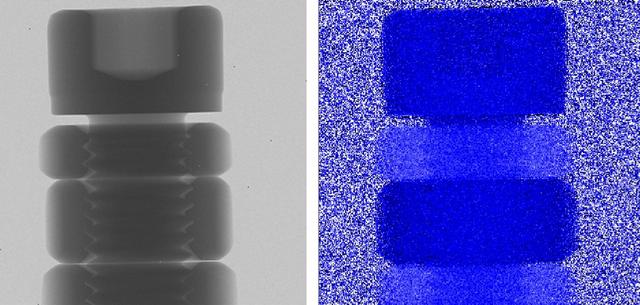Speaker
Description
We report on the continued development of the ‘GP2’ detector [ 1 ], highlighting a selection of energy resolved measurements and associated methodology. GP2 is a 100k pixel time-of-flight (ToF) neutron camera, which combines a gadolinium converter film and a CMOS (Complementary Metal Oxide Semiconductor) readout sensor [ 2 ]. This paper is separated into three categories; (1) detector optimization and integration into the Imaging and Materials diffractometer (IMAT) [ 3 ] (2) method development using sample environment and (3) the ensuing data reduction and analysis.
The process of taking an R&D detector into the user program of IMAT is briefly described. Recently the GP2 detector has been integrated with the IMAT control software, achieved via the ‘Experimental Physics and Industrial Control System’ (EPICS) [ 4 ], which means that the detector is controlled and operated from the ISIS ‘IBEX’ environment [ 5 ]. This ensures that the experimental run-time is synchronized, all instrument parameters are recorded (such as beamline monitors) and that data is archived. IMAT changes imaging detectors via a robot arm, for which bespoke mechanics have been commissioned. Improvements to the detector neutron efficiency via isotopically enriched gadolinium will also be discussed.
GP2 has been used to perform the first low temperature imaging study on IMAT. Characterization measurements of the CCR (closed cycle refrigeration) sample environment and energy resolved measurements from samples which undergo phase changes at low temperatures will be reported.
The ToF spectrum recorded in each pixel of the detector provides much more information in addition to the macroscopic cross section. Unique physical parameters can be extracted via feature parameterization; fitting a Bragg edge for texture or strain for example. A complete parameterization, a Rietveld refinement in transmission, is usually an under-determined problem and requires good prior knowledge of the sample. Here we highlight methods of contrast enhancement and feature extraction that do not require prior knowledge of the composition of sample or extensive fitting. These methods of contrast-enhancement simply require the existence of unique features in the ToF spectra. The effectiveness of methods like principal component analysis and energy-band division are of course limited by ‘how different’ the ToF is across the pixels. However, these methods offer a simple ‘online’ analysis. Their immediate benefit is to distinguish features that in a white-beam image (integrated in ToF/energy) would ‘accidently’ have had the same grey value due to their combination of path length, density and cross section being similar despite their ToF being different. One example is shown in figure (left), where the white beam image does not discriminate between the alternating austenite/martensite nuts, on a martensitic bolt. By choosing an appropriate weighting scheme the materials can be separated resulting in the three distinct grey-values shown in figure (right).

- D. E. Pooley, et al., IEEE TNS, vol. 64, no. 12, p. 2970, 2017
- I. Sedgwick, et al., IEEE NEWCAS, 2012
- T. Minniti, et al., JINST, vol. 13, p. C01039, 2018
- epics.anl.gov
- isis.stfc.ac.uk/Pages/IBEX

